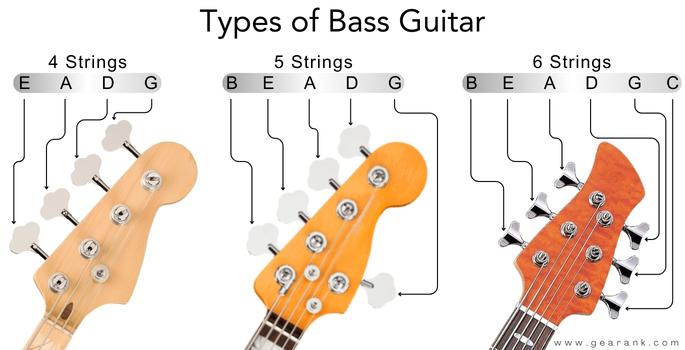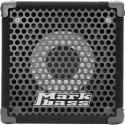How To Tune a Bass Guitar in No Time

Given the foundational role of bass in a band, you have to ensure that your bass is in tune all the time.
Here, I will teach you how to tune different bass guitars using readily available tools. Covered here are the most common tuning methods and the standard tunings used by different types of bass guitars.
I'll also share some quick tips on caring for your instrument to keep your bass in tune for longer periods.
Here is a quick breakdown of what this article is all about.
-
How to Tune a Bass Guitar
-
How to Tune the Different Types of Bass Guitars
-
Drop Tunings
-
How to Care for Your Bass
By the end of this article, you'll have a well-tuned bass guitar ready for use. So, let's begin.
How to Tune a Bass Guitar
Here are some of the most common methods of tuning your bass guitar, which you can do yourself.

Reference image only
Tuning by Reference Note: Piano, Other Instruments, Pitch Pipe, Tuning Fork
This method can serve two purposes. One, if you don't have any tuners handy, and two, if you want to train your ears to better identify a tuned note.
-
Using a keyboard (piano), or other instruments, play the reference note you want to tune your bass to. Pitch pipes are also useful for this method.
-
Start by tuning one string. Listen to the reference note, and match the pitch by adjusting your bass guitar's corresponding tuning peg. Raise or lower the pitch as needed.
-
To make your tuning process systematic and consistent, always start with the thickest string (Lowest pitch string), and work your way down to the thinnest. This way you don't miss tuning a particular string.
-
Once all strings are tuned, play some octave notes higher up the fret and make subtle adjustments to alleviate intonation issues. You can also do this by playing the 12th fret harmonic, and matching the pitch with the fretted 12th fret note. A well tuned string will sound good even as you move up the frets.
This method can really improve your ear's ability to determine a tuned note. However, this can take a bit of practice and can be inaccurate at times.
So, if you play with others, it's best to have the following tuning devices. These tools ensure that you're all in standard tune all the time.
Mobile Device Tuner App

There are plenty of free tuner app options which you can download. These types of tuners utilize your phone's microphone to pick up sound and display it's pitch.
-
Open your tuner app and place your phone close to the sound source, like a speaker, sound hole (for acoustic bass), or just the bass guitar (in the case of an electric bass that's not plugged).
-
Pluck the string starting from the low E-string, observe the display and adjust accordingly. Usually the display has a tuning pin that needs to be centered, but there are other display types. Raise or lower the string's pitch accordingly.
-
Repeat the tuning process until you've tuned all the strings. Then play some notes higher up the fret to adjust for intonation issues.
This tuning method is great for home use and in isolated environments. However, a tuner app may struggle to function properly in noisy environments like performance venues and stages.
Clip-On Tuners
Clip-on tuners measure the vibration of the strings and convert them into an electric signal. These signals are then translated into pitch values (notes) that are displayed on the tuner.
This type of tuner can have a +/- 0.02 to +/- 0.5 cent accuracy.
-
Turn on the Clip on Tuner. If needed, set the tuner clip to the proper instrument, which should be Bass.
-
Clip the device to your bass guitar's headstock.
-
Pluck the string starting from the low E-string. Observe the display of the tuner and adjust the tuning pegs accordingly. Clip-on tuners have a variety of display types, including detailed LED screens, which are easier to use. Basic ones use small lights that you need to center.
-
Apply the same process to the other strings, and play notes on the upper fret to make adjustments for intonation issues.
Since Clip-on tuners measure vibrations, they aren't as prone to background noise as mic-based tuners.
If you have room for a stompbox, you can opt for a tuning pedal, as it provides more accurate pitch readings.
Reference image only
Tuner Pedal
An electronic tuner pedal is an essential part of a gigging musician's rig. It measures the signal from your instrument and shows it on its display screen.
This tuner type has a +/- 0.1 to +/- 1 cent accuracy, which makes it easy to keep bass strings tuned.
-
Plug in your electric bass guitar to the tuner pedal. (Some tuners will need to be plugged into a power source, while other tuners like the Boss TU 3 can run on batteries.)
-
Tune the strings starting from the low E. Match the pitch of your bass to the correct pitch as shown on the display of the pedal. Turn the tuning pegs accordingly.
-
Do the same for the other strings, and don't forget to play some upper fret notes to check intonation. Make subtle adjustments to correct any intonation issues.
Tuning using a tuner pedal is the most accurate option among the four mentioned, and is perfect for live performances and even studio recordings.
Note: Guitar tuner pedals are also used for bass and other stringed instruments like violin, ukulele, banjo, and others. It's settings can be switched to the match the appropriate instrument you want to tune.
How to Tune the Different Types of Bass Guitars

Four-String Bass
A standard bass guitar has four strings. The standard tuning is E, A, D, and G, with the E string being the lowest and the G string being the highest.
You might be familiar with this tuning pattern because it's similar to the standard tuning on guitars, but on a lower octave, and minus the two thinnest strings.
The standard tuning for bass guitar is lower octave E, A, D, and G. While a guitar is tuned to E, A, D, G, B, and e (higher octave E).
Five-String Bass
Tuning a five-string bass guitar works similarly to tuning a four-string bass but with one extra string.
With this type of bass, you can add a string on either side while maintaining the tuning of its core set of strings.
The most common setup for 5-string bass is adding an extra low string tuned to B, resulting in a B, E, A, D, and G tuning.
Those who add an extra high string usually tune their bass to E, A, D, G, and C. The extra C string gives bassists higher notes while retaining symmetrical note positions, for playing single notes and chords.
Six-String Bass
If a five-string bass chooses between having an additional lower or higher string, a six-string bass has them both. The most common 6-string bass tuning is B, E, A, D, G, and C.
Drop Tunings
While six-string bass guitars are incredible instruments, you can also expand the tonal range of your standard four-string bass without adding extra strings.
That's where drop-tuning comes in. This type of tuning drops the pitch of your lowest string to a degree below what you usually use. Using thicker bass string gauges is advised in this situations.
The most popular form of drop tuning for a bass guitar is drop D tuning. To achieve this, you have to lower the pitch of the low E string to a D, which is a whole-step down. This means that starting from the D string, your tuning would be D, A, D, and G. There are other drop tunings like half-step down tuning and Drop C, as used by Bryan Beller, the bassist of Aristocrats.
Drop tuning creates a lower pitch on your bass, which you can utilize in order to create darker tones and further give a different character to your music.
How to Care for Your Bass Guitar
Regularly Change Your Strings
Dirt, grime, and rust can contaminate your bass strings. So, to keep your bass strings in great condition, it's best to change them regularly.
Ideally, you must change the strings as soon as you see them turn dark or dull. It's also important, as it helps ensure that your bass guitar tone is in top condition when playing.
Caution that bass strings are more expensive compared to guitar strings. And this is why prolonging their lifespan through cleaning and maintenance is important.
Frequently Clean Your Instrument and Your Hands
As mentioned above, your bass guitar can easily accumulate dirt and grime. You can help avoid or minimize this by washing your hands before and after using the instrument.
You can use a clean cloth or go deeper if you have the proper cleaning tools.
Store Your Bass In A Case
Maintaining your bass guitar in a protective bag or case is the best way to shield it from debris, dirt, dust, and other outside forces.
Ideally, you should store the instrument in a hard case. I can't stress this enough, especially if you own an expensive bass!
If you don't have a hard case, a standard bass guitar gig bag will do, but it doesn't offer the same protection from the external elements.
Your bass should stay in a place with a room temperature of about 65-77°F (18.3-25.5°C) and a steady humidity. This prevents any cracks or damage to the bass guitar body and can help prolong the lifespan of the strings.
Final Thoughts
Any musician will agree that an out-of-tune instrument is off-putting, even more so for bass guitars, which really jump at you in live performances and recordings.
The steps provided above will ensure that your bass is in tune when you perform and when you practice.
Interestingly, this method also works when tuning a bass ukulele.
Remember to use the method and tool that fits the venue and your setup.
Knowing how to tune a bass guitar is just half the battle. The next half is the proper care of your bass so it stays reliably in tune for longer.
Frequently Asked Questions
Can You Tune a Bass Guitar Without an Amp?
Yes, when using pedal tuners and clip-on tuners. Mic-based tuners will have a hard time picking up the low volume of an electric bass guitar that's not plugged in.
Which is Harder to Tune, Bass or Guitar?
The thicker strings on a bass make them harder to fret. So bass guitars require more fretting and playing effort compared to guitars. This heavier tension also makes tuning each string a bit more difficult, but the difference is not too substantial.
There's a common misconception that bigger hands are for bass guitars, while smaller hands are for electric guitars. However, this is not always the case, as choosing one over the other will boil down mostly to personal preference.
A great example is Victor Wooten, who's a fantastic bass guitar player with small hands. On the contrary, there's also Steve Vai, who's great on electric guitar and has enormous hands.
In short, physical limitations really don't matter if you like the instrument you're playing.
Contributors:
Jerome Arcon - Co-writer
Jerry Borillo - Illustrator












